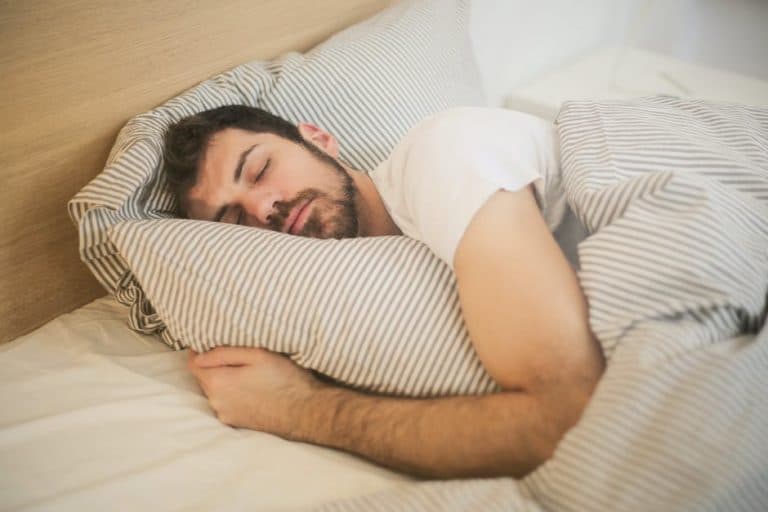Did you know that back pains are the leading cause of disability?
Experiencing back pain can stop many people from engaging in everyday activities. It can also disrupt your sleep quality.
It is essential to understand that poor sleep positions and back pains have an inherent relationship. Having poor sleep positions can intensify back conditions. The best way you can relieve your back pains is by changing your posture and sleeping position.
In this guide, we’ll discuss the best sleeping position for lower back pain. Read on to learn different types of back pains and some extra tips for better posture and sleep.
Understand Your Type of Back Pain
Back pain can happen due to many life conditions, workspaces, and lifestyles. It can be as simple as pregnancy or as complicated as a chronic illness such as arthritis. To find the best sleeping position, you should understand your type of discomfort.
Upper Back Pain
Pain coming from your thoracic spine is one of the most reasons for upper back pain. This pain can be unbearable and sudden. Your body may be unable to move around comfortably.
You are at risk if you have an inactive lifestyle, like sitting down for a long work period. Upper back pain can happen due to poor posture or even by lifting heavy items incorrectly. Other reasons include osteoporosis, injury trauma, and emotional stress.
Habit Inducing Pain
Simple everyday habits in your lifestyle may be the cause of your back pain. How you sit as you drive, work, or watch TV can negatively affect your spine health.
Do you tend to roll your shoulders forward as you work? Or does your head push forward while you stare at the traffic ahead? Being aware of your posture may be the solution to relieving your back pain.
Watch your posture as you walk and sit. Your head should stay aligned to your body, with your shoulders slightly backward.
Lower Back Pain
Lower back pain can affect about 80% of adults in their lifetimes. It can feel incapacitating, sharp, or dull. Like with upper back pain, you may feel lower back pains due to your lifestyle or work life.
The process of aging also causes spine degeneration and lower back pain. Sudden or unexpected lower back pain can be an indication of a health issue. Some of these causes include infections, kidney stones, or genetic skeletal problems.
Find the Best Sleeping Position for Lower Back Pain
Get enough sleep by knowing how to sleep with proper lower back support. Lower back pains can affect your everyday sleep and quality of life. Changing your sleeping position is an effective method to relieve your back pains.
Here, you can find the best sleeping position for lower back pain and upper back pain:
Side Sleeping
This position is one of the best for lessening snoring and improve digestion. Facing the left side holds your stomach below your esophagus. Sleeping in this position makes it harder for your stomach acid to rise.
If you’re pregnant, this position will improve your fetal and maternal health. Left side sleeping reduces heartburn and promotes blood flow. However, sleeping on your right side may worsen symptoms of digestive issues.
Side sleeping also improves some spinal alignment. It relieves lower back pains, but it has the potential to worsen neck and shoulder pains.
Stomach Sleeping Plus Hip Support
Stomach sleeping alone can put stress on your lower back and neck. However, stomach sleeping may be the only position that gives you comfort. If you struggle to sleep on your side, then place a pillow under your lower abdomen or hips.
Placing an extra cushion stops your back from curving unnaturally. It also reduces the pressure feeling on your lumbar spine. Make sure to use a thin pillow to avoid bending your head backward.
Sleeping in a Fetal Position
Sleeping in a fetal position can ease your back pains by sleeping like a baby. Curl your body with your knees tucked up to your chest.
This position benefits your joints and stops your spine from curving backward. You can also find relief from pain by sleeping in this position if you have bulging or herniated discs. This is a condition where rubbery tissues between your spine slip out of place.
By curling, you can open up the space between the vertebrae to reduce the tension on the discs. Try to alternate sides every night to keep your body more balanced. Be sure to have a supportive pillow under your neck and head.
Pillow Between the Knees
Side sleeping is great, but it may cause misalignment if you sleep on an unreliable mattress. Adding a pillow between your knees can help relieve lower back pain from the wrong bed. Rather than having two separate pillows, you can use a body pillow.
Back sleeping can evenly distribute your body alignment. However, sleeping on your back can disturb your spine’s natural curve.
Placing a pillow under your knees supports your natural curve. It also allows less stress on your lumbar spine. Sleeping with a pillow between your knees decreases pain-inducing pressure points.
Inclined Back Sleeping
Sleeping in an inclined area can prevent pressure build-ups on your spine. You can go for either an adjustable base or wedge pillow.
This position also relieves isthmic spondylolisthesis symptoms, which is a lumbar spine issue where one vertebra slips above the one below it. It’s a condition that’s responsible for muscle spasms, sciatica, and lower back pain.
Tips to Support Spine Health
One of the best ways to support your sleeping posture is by upgrading your pillows and mattress. If your bed feels too stiff or plush for your body type, getting a new one usually helps.
Go for memory foam, hybrid, or latex mattresses to help with lower back pain. Latex and memory foam pillows conform to your head and neck. These type of pillows gives enough support for your body and help relieve tension.
You could also consider topical treatments or chiropractic care to reduce back pains. Opt for pain relief ointments or cold and hot therapy to soothe your muscles. Try going for massages or spa treatments to relieve your overall body pains.
Fix Your Sleeping Posture for Better Health and Sleep
Now that you know the best sleeping position for lower back pain, it’s time to apply it. Take the time to fix your posture and position your sleep routine every day to make it a habit.
Are you suffering from persistent back pains? Even after changing sleeping positions? Be sure to contact us today so we can help you find some relief.

